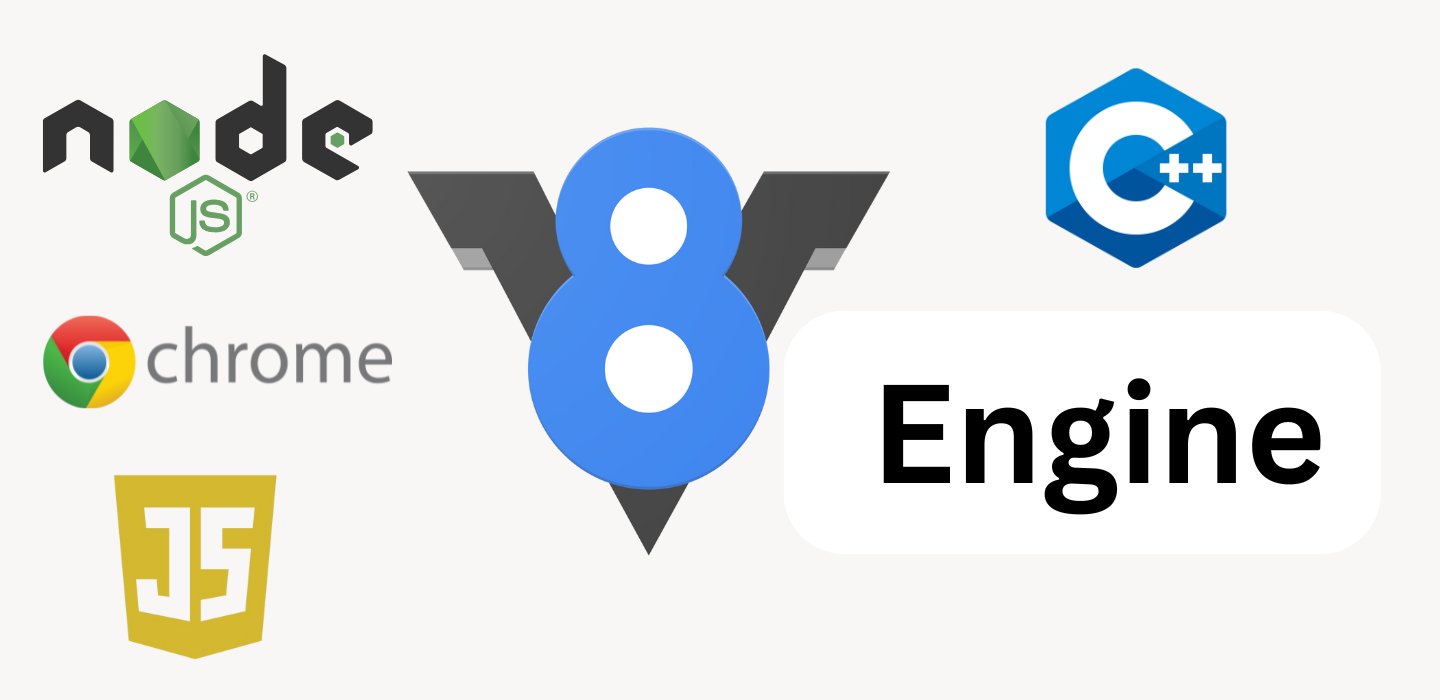
Introduction: Why Understanding V8 Matters
JavaScript’s speed and efficiency don’t come from the language itself they come from the engine that executes it. At the heart of Google Chrome and Node.js, we have the V8 Engine, a highly optimized JavaScript engine built by Google.
Most developers use JavaScript daily but don’t really ask:
- What happens inside V8 when JavaScript runs?
- How does V8 turn JavaScript code into machine code so quickly?
- Why is JavaScript faster today compared to a decade ago?
Mastering V8 isn’t just about knowing how it works it’s about understanding how to write high-performance JavaScript that takes full advantage of V8’s optimizations.
What is V8? The Engine Powering JavaScript Execution
V8 is a high-performance JavaScript engine developed by Google, initially designed for Google Chrome but later integrated into Node.js, Deno, and other runtime environments.
Why is V8 Special?
✅ JIT Compilation for Speed – Unlike traditional interpreters, V8 compiles JavaScript into highly optimized machine code for faster execution.
✅ Garbage Collection & Memory Optimization – Efficient memory management prevents performance bottlenecks.
✅ Hidden Classes & Inline Caching – Dynamically optimizes object property access to make JavaScript faster.
✅ Multiplatform Support – Runs not just in browsers but also in server-side JavaScript environments (Node.js).
V8 is the reason JavaScript can run high-performance applications like Google Docs, Figma, and Netflix smoothly in the browser.
How V8 Executes JavaScript: The Full Process
V8 doesn’t just interpret JavaScript it transforms it into highly optimized machine code for the CPU. Let’s break it down step by step.
Step 1: Parsing and Tokenization
Before V8 can execute JavaScript, it first parses the code.
- Lexical Analysis: Converts JavaScript into tokens (small pieces of code).
- Abstract Syntax Tree (AST) Creation: The tokens are structured into an AST, which represents the logic of the program.
Example: The simple code
let x = 5 + 10;is broken into tokens:
let,x,=,5,+,10,;- Then, an AST is built to structure this expression for execution.
Step 2: Ignition (Interpreter Execution)
Once the AST is ready, Ignition (V8’s interpreter) executes JavaScript in a fast but unoptimized way.
- Ignition converts JavaScript to bytecode (an intermediate representation).
- This allows JavaScript to start executing quickly, even before optimizations.
JIT Compilation: How V8 Boosts Performance
Unlike traditional compiled languages (C, Rust) that require ahead-of-time compilation, JavaScript is compiled on the fly using Just-In-Time (JIT) Compilation.
How JIT Works in V8
- Ignition (Baseline Interpreter) starts executing code immediately.
- If a function is executed frequently, V8 marks it as hot code.
- The TurboFan Compiler takes this hot code and compiles it into optimized machine code.
- If JavaScript’s dynamic nature causes performance issues, V8 can deoptimize functions and revert to Ignition.
Example: If a function runs inside a loop thousands of times, V8 will recompile it into faster machine code using TurboFan.
Why JIT Compilation is So Powerful
✅ Fast Startup – JavaScript begins executing immediately with Ignition, instead of waiting for full compilation.
✅ Real-Time Optimization – Frequently used code is compiled on demand into faster machine code.
✅ Deoptimization Capabilities – If an assumption about the code turns out wrong, V8 can roll back to interpreted execution.
This is what makes JavaScript fast and adaptive, even though it is dynamically typed.
How V8 Optimizes JavaScript Performance
V8 has multiple layers of optimizations to make JavaScript execute faster than ever before.
A. Hidden Classes & Inline Caching
JavaScript objects are dynamic, which makes property lookups slower than in compiled languages.
- Hidden Classes: Instead of treating every object dynamically, V8 assigns hidden classes to objects behind the scenes.
- Inline Caching: If an object is accessed multiple times, V8 stores fast lookup paths to prevent repeated expensive lookups.
Example:
function Person(name, age) { this.name = name; this.age = age; } let user1 = new Person("Alice", 25); let user2 = new Person("Bob", 30);Instead of treating
user1anduser2as separate dynamic objects, V8 creates a hidden class that speeds up property access.
B. Garbage Collection (Memory Optimization)
JavaScript automatically manages memory, meaning developers don’t need to manually allocate or free memory.
- V8 uses Generational Garbage Collection:
- Young Generation: Stores short-lived objects and clears them frequently.
- Old Generation: Stores long-lived objects with less frequent cleanups.
This prevents memory leaks while keeping JavaScript execution fast.
Real-World Case Study: V8’s Impact on High-Performance Applications
Let’s analyze two industry-leading applications that take full advantage of V8’s speed.
Case Study 1: Google Docs – Real-Time Collaboration
Google Docs handles thousands of real-time updates without lag. This is possible because:
- Efficient Event Handling – JavaScript only updates the part of the UI that changes, using V8 optimizations.
- WebSockets & Data Syncing – Background asynchronous execution ensures that updates are sent without blocking UI interactions.
- Optimized DOM Manipulation – Instead of reloading entire pages, JavaScript modifies only necessary elements dynamically.
Case Study 2: Figma – A Browser-Based Design Tool That Feels Native
Figma renders complex vector graphics in real time using JavaScript and V8.
- WebAssembly & JavaScript Hybrid Execution – Computationally heavy tasks are optimized through WebAssembly, reducing JavaScript load.
- GPU-Accelerated Rendering – Instead of CPU-heavy operations, Figma offloads rendering tasks to the GPU.
- V8’s Hidden Classes for UI State Management – Figma uses JavaScript’s efficient state caching to keep UI fluid and responsive.
Both applications push JavaScript to its limits, proving that V8’s performance optimizations are critical for modern web apps.
Conclusion: Why V8 Mastery is Essential for JavaScript Developers
V8 is the backbone of modern JavaScript execution, and understanding it allows developers to:
✅ Write Faster JavaScript – Use hidden classes, inline caching, and optimized data structures.
✅ Prevent Performance Pitfalls – Avoid unnecessary deoptimizations and memory leaks.
✅ Build High-Performance Applications – Leverage asynchronous execution and JIT optimizations.
Mastering V8 isn’t optional it’s what separates a good JavaScript developer from a truly exceptional one.











